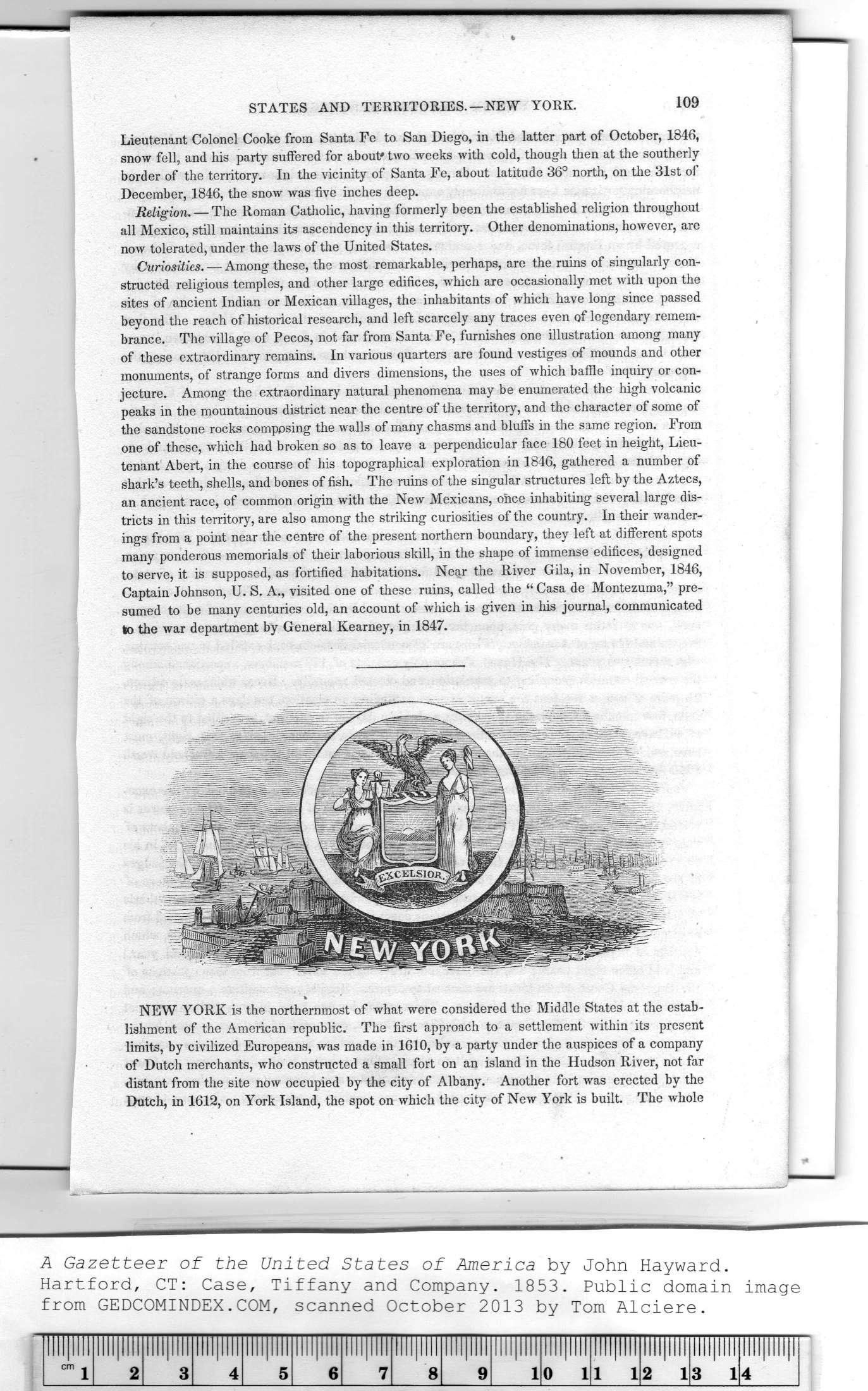|
|
Note: Ctrl and + increases the font size of the text below, Ctrl and - decreases it, and Ctrl and 0 resets it to default size.
STATES AND TERRITORIES.—NEW YORK. 109
Lieutenant Colonel Cooke from Santa Fe to San Diego, in the latter part of October, 1846,
snow fell, and his party suffered for about* two weeks with cold, though then at the southerly
border of the territory. In the vicinity of Santa Fe, about latitude 36° north, on the 31st of
December, 1846, the snow was five inches deep.
Religion. — The Roman Catholic, having formerly been the established religion throughout
all Mexico, still maintains its ascendency in this territory. Other denominations, however, are
now tolerated, under the laws of the United States.
Curiosities. — Among these, the most remarkable, perhaps, are the ruins of singularly con-
structed religious temples, and other large edifices, which are occasionally met with upon the
sites of ancient Indian or Mexican villages, the inhabitants of which have long since passed
beyond the reach of historical research, and left scarcely any traces even of legendary remem-
brance. The village of Pecos, not far from Santa Fe, furnishes one illustration among many
of these extraordinary remains. In various quarters are found vestiges of mounds and other
monuments, of strange forms and divers dimensions, the uses of which baffle inquiry or con-
jecture. Among the extraordinary natural phenomena may be enumerated the high volcanic
peaks in the mountainous district near the centre of the territory, and the character of some of
the sandstone rocks composing the walls of many chasms and bluffs in the same region. From
one of these, which had broken so as to leave a perpendicular face 180 feet in height, Lieu-
tenant Abert, in the course of his topographical exploration in 1846, gathered a number of
shark's teeth, shells, and bones of fish. The ruins of the singular structures left by the Aztecs,
an ancient race, of common origin with the New Mexicans, once inhabiting several large dis-
tricts in this territory, are also among the striking curiosities of the country. In their wander-
ings from a point near the centre of the present northern boundary, they left at different spots
many ponderous memorials of their laborious skill, in the shape of immense edifices, designed
to serve, it is supposed, as fortified habitations. Near the River Gila, in November, 1846,
Captain Johnson, U. S. A., visited one of these ruins, called the “ Casa de Montezuma," pre-
sumed to be many centuries old, an account of which is given in his journal, communicated
to the war department by General Kearney, in 1847.
NEW YORK is the northernmost of what were considered the Middle States at the estab-
lishment of the American republic. The first approach to a settlement within its present
limits, by civilized Europeans, was made in 1610, by a party under the auspices of a company
of Dutch merchants, who constructed a small fort on an island in the Hudson River, not far
distant from the site now occupied by the city of Albany. Another fort was erected by the
Dutch, in 1612, on York Island, the spot on which the city of New York is built. The whole
|
lllllllll |
lllllllll |
lllllllll |
lllllllll |
llll|llll |
lllllllll |
lllllllll |
lllllllll |
lllllllll |
lllllllll |
|
|
lllllllll |
lllllllll |
llll|lll!|l |
|
Ut 11 j |
2 |
3 |
4 |
5 |
6 |
7 |
8 |
9 |
1 |
0 1 |
1 1 |
2 1 |
CO |
4 |
|
